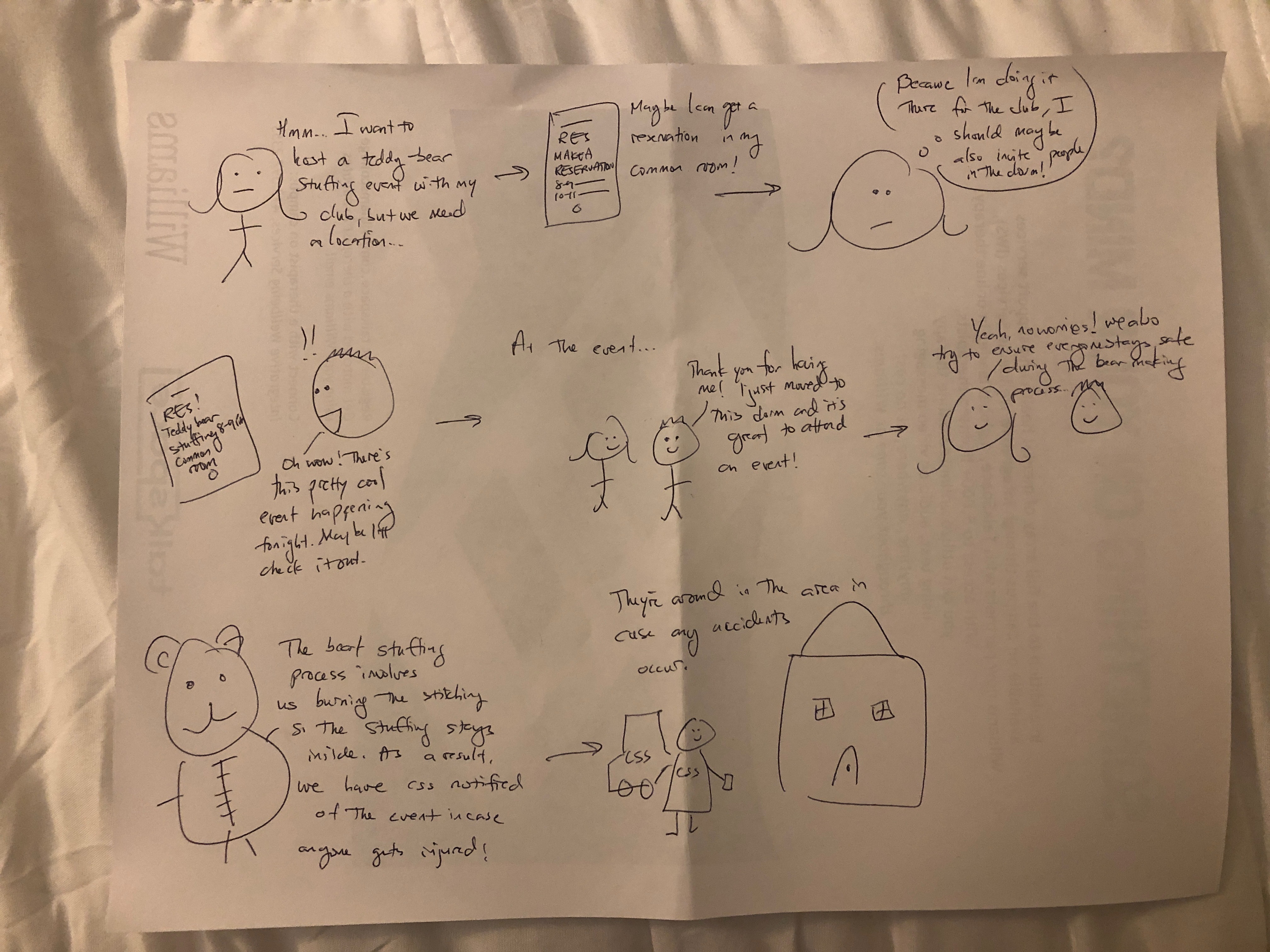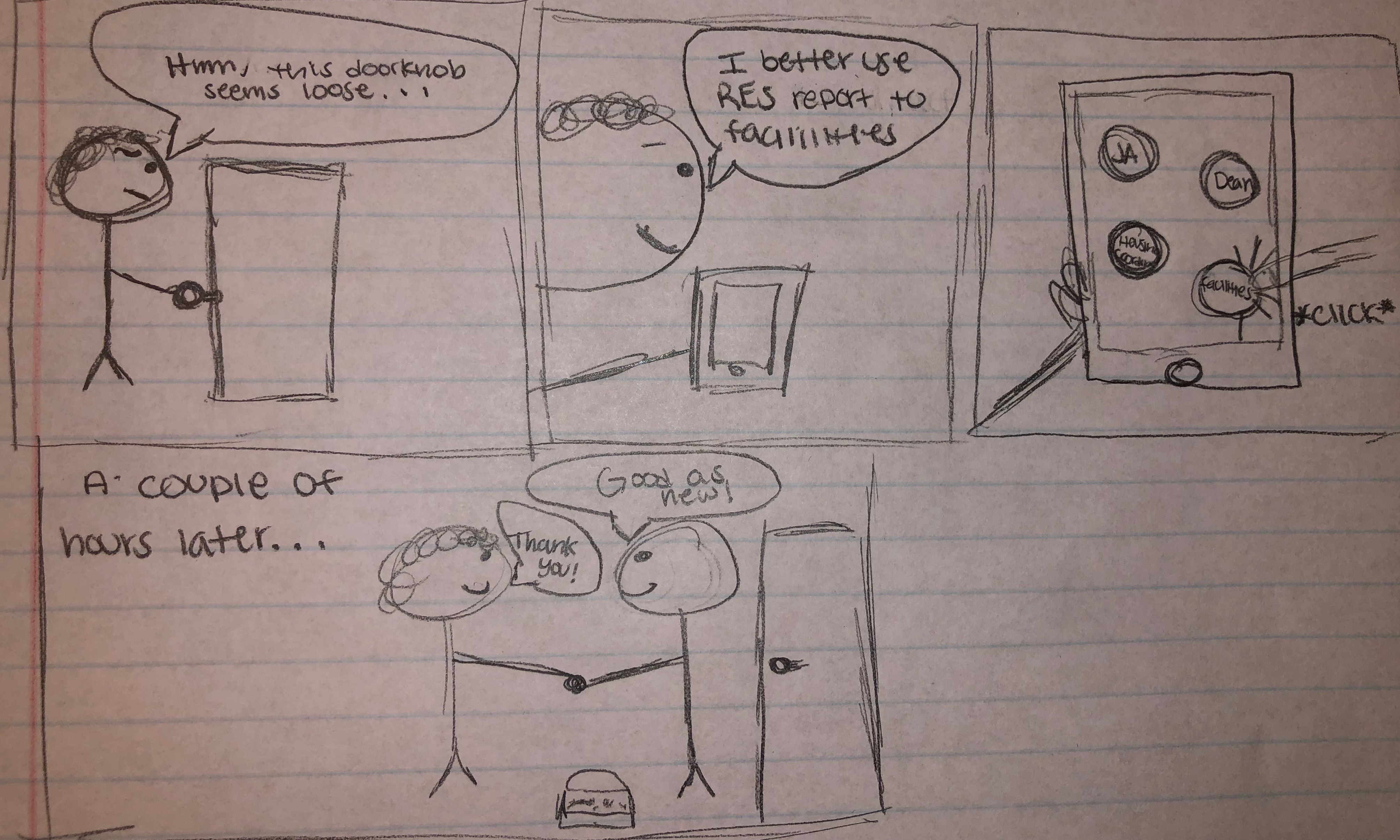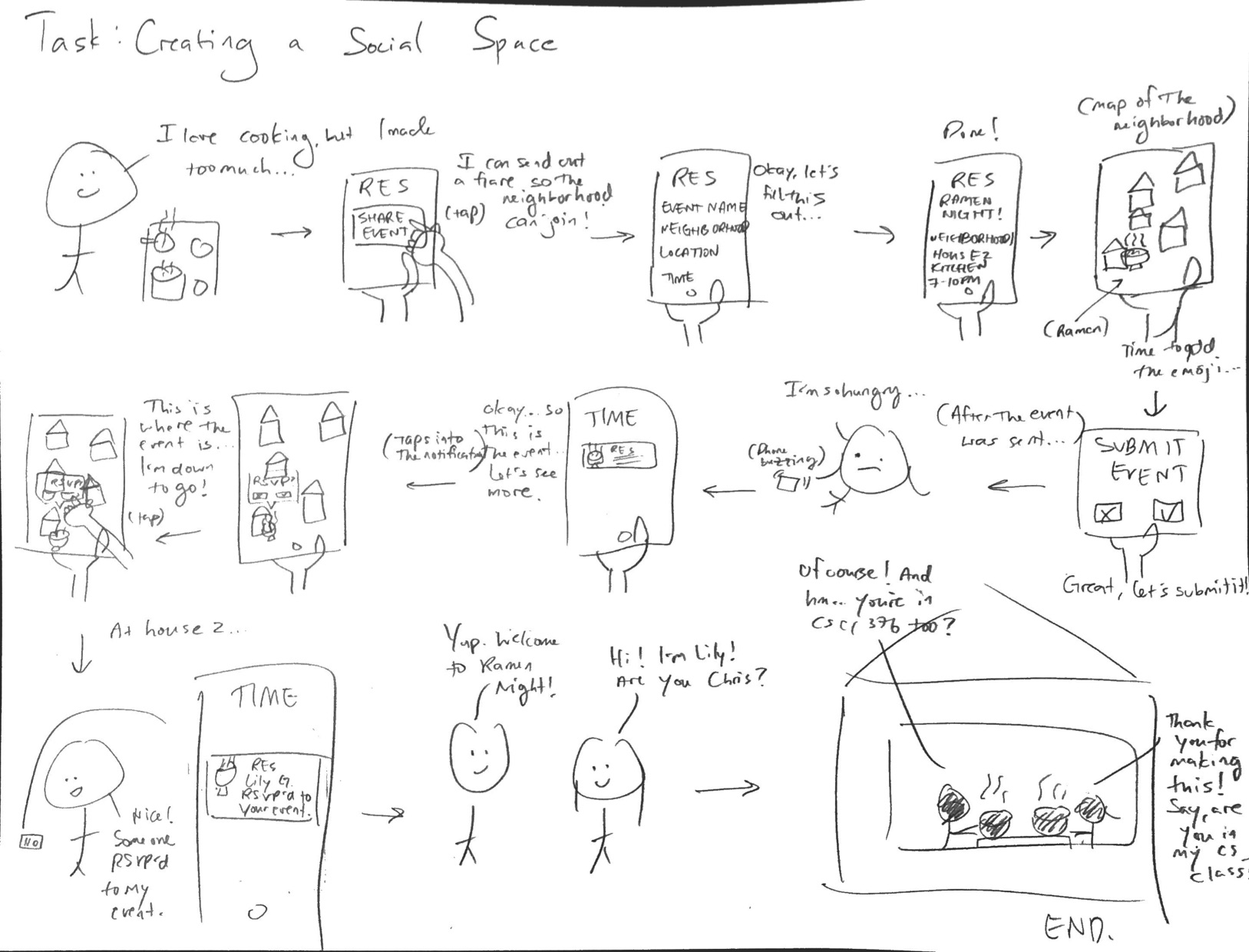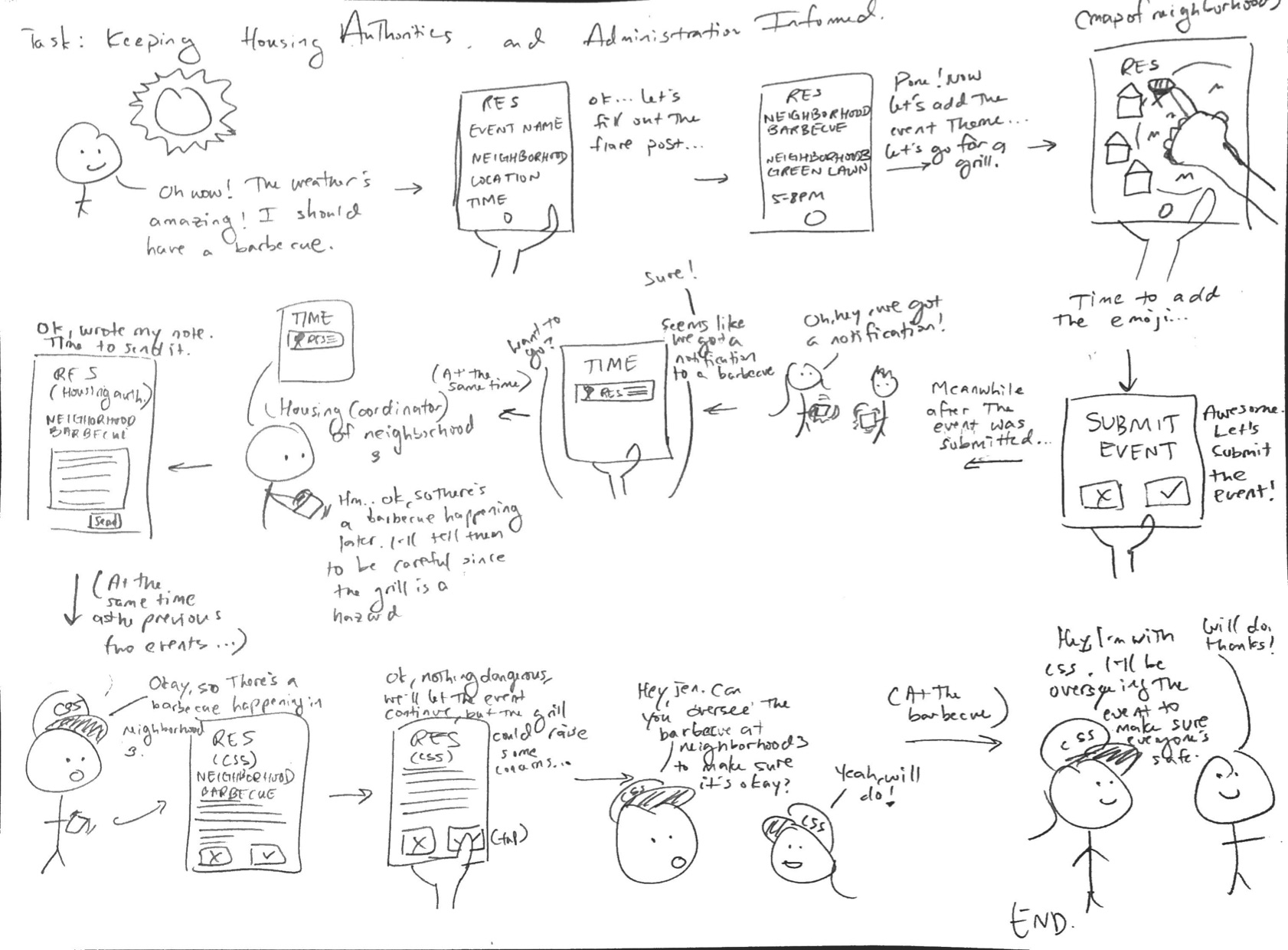RES
Team:
- Nyla Thompson: designer, researcher
- Gavin Li: designer, researcher
- Hailey Han: designer, researcher
Problem and Solution Overview:
The problem we want to address is the confusion and lack of communication regarding housing, specifically lack of social engagement, future housing, and communication with administration and facilities. While there are spaces across campus for gatherings, they are oftentimes underutilized and under promoted. The goal of RES is to make knowledge of these events more widespread so they can be on people’s radar. We plan to achieve this through an event system where people can share events they are hosting so people within that quad or neighborhood will be notified; administration will be informed of these events as well. As for housing, there will be a platform for each living space where past and current residents are listed and they can voice their thoughts on living there, providing more insight into the living space than just its blueprint. Lastly, communication with administration and facilities is addressed through a reporting system where students can notify housing coordinators, junior advisors, deans, or facilities of housing-related issues.
Design Research Goals, Stakeholders, and Participants:
We conducted three contextual inquiries for our design research. The first was with a Williams College senior who lives off campus, the second with a previous Junior Advisor who now sits on the Junior Advisor Advisory Board, and the third with a Williams college first year student. Our goal was to learn more about their experiences with housing at Williams and also to learn about the ways in which they’ve digested related information. The first contextual inquiry was done in the students’ off campus apartment, and the last two were conducted in first-year dorm Mission Park. We chose these participants for our contextual inquiries because they have varying experiences with housing. We were therefore able to hear about housing from someone who can provide a comparative perspective on their dorm and off campus experience, someone who has had more of an administrative role with housing, and also someone who is just experiencing housing on a college campus for the first time. Overall, contextual inquiry was a useful method of collecting data because we were able to observe the ways students communicate with others, such as neighbors, roommates, landlords, and custodians, within their residences.
Design Research Results and Themes:
The most common problem that we noticed from our contextual inquiries involved communication. We noticed this whether it was communication with administration, housing authorities, roommates, or neighbors, and the severity of the problem varies based on the student. While communication with administration and housing authorities were equally severe for all three students we spoke to, the lack of communication with neighbors and especially in a social way was definitely more of a concern for the students living in campus dorms. This further emphasized this lack of a social space in a residential environment and how much college students wanted this to exist. In addition to this, there was a problem of having difficulty organizing events for first year students as a Junior Advisor due to a lack of an effective way to communicate, making it difficult to find an appropriate and available space, and further creating a barrier for connecting with their entry. Overall, common themes were centered around the fact that housing logistics and information were difficult for all these students to deal with because of poor communication, and also centered around the fact that there were no social spaces within their housing communities due to barriers for creating these spaces.
Answers to Task Analysis Questions:
The design will be centered around students, but people heavily involved with students like facilities, and deans will also use the app but as admins instead of regular users who can register for events. Students with roles like junior advisor or housing coordinator will be able to use the app as both admin and regular user. The design will accomplish the tasks of promoting events, providing additional information to housing spaces, and getting students connected with administrative users for housing-related issues. The tasks are commonly learned through word of mouth where people provide others with contact information or information about events happening. The tasks are performed either via face-to-face communication, such as over dinner or in passing, or through communication devices such as a phone text or email. The relationship between the person and the data is that the data is supposed to make housing-related parts of life more convenient and accessible for the user. Besides RES, other tools the person may have are Google, Craigslist, and forms of social media that can be used to communicate and find housing information/events; other people can be considered tools since they can also provide information. Users communicate with administration through individual chat to voice their problems, and their peers through event flares and reading each other’s thoughts on living spaces. The time constraints of the tasks vary on case-by-case basis. If a residential building’s heating stops working during the winter facilities will have a huge time constraint for addressing it whereas a flare for an event next month will have a smaller time constraint. When things go wrong, let’s say an event is seen as potentially dangerous, campus security can watch over the event to ensure everyone is safe.
Proposed Design Sketches:

- Design #1: This will be a mobile app with a visual directory of all the residents’ profiles that lists contact information, a biography, and also what they like and don’t like about the space they are currently living in. There will be a list of all living spaces associated with the university’s students (even off campus apartments). The user will be able to pick which building they want to see and the floor plan will give access to the residents’ profiles. The residents’ profiles will be fun and interactive by having emojis that describe their interests.

- Design #2: A feature of our design is connecting people living in the same dorm by sharing events members of the dorm are hosting. Meeting people within the dorm system is especially difficult after the first-year entry system where people no longer gather in common rooms to meet everyone else and everyone picks into dorms with a select friend group. We will implement an event system where people can reserve public spaces in the building such as the common room or the kitchen to host events. These events can also be public so that everyone in the building will be notified of it and is welcome to attend.

- Design #3: We want to create a reporting system on our mobile app where students can notify housing authorities if they have any issues with their housing. These issues can be regarding the habits of the people that live in the same dorm, such as a specific individual constantly playing loud music at inappropriate hours, or a loose door handle. Students only have to press the appropriate button on the RES app to immediately notify individuals such as housing coordinators, junior advisors, deans, or facilities to help resolve these issues more quickly.
Final Design Choice:
We decided to design an app with Event Flares that can notify students of events happening within housing neighborhoods. Students will have the option to create or attend events. If creating an event, a student can fill out a virtual form with the details, decide if it is a public event for all students on campus or a private event for their housing community, then choose an emoji to visually represent the event on a map to notify others. If using our design to look for events to attend, a student will be able to browse their personal map with events that are available to them and check a box that says they are planning to attend. Students will get notifications for updates on events they’ve created, events they plan to attend, and events that are created within their dorm or housing neighborhood. Housing authorities will get similar notifications regarding events occurring in the house that they are a resource for. This design accomplishes the task of creating social spaces within housing communities and task of creating better communication with housing authorities who will be more aware of the events occurring within the spaces they are overseeing. The way that this information is displayed on a map with emojis is better suited for students because it is visually appealing/fun whilst solving problems of information overload with social aspects of housing. These two tasks are more compelling than others due to the fact that communication was a constant issue observed through all our contextual inquiries, as well as the lack of social interaction with neighbors.
Written Scenarios:
Creating an Event:

In this storyboard, we follow a user who wants to create a social space as they realize that they have an experience they want to share. Before they host the event flare, they select the neighborhood, house, and specific location within the house they are in. The phone shows a map with the user’s location that can help set things up. After adding in the details about the event, they can add an icon that represents the event and it will be pinned on the map for the intended audience to see. In this story, the ramen night was only for the people in the specific house, so only the house residents get a vibrating push notification on their phone. Then, users can RSVP accordingly.
Keeping Housing Authorities Informed:

In this storyboard, we follow a user who hosts an event and how that event gets transferred to housing authorities. After the event gets flared, they will get a notification about what event is going on and when it’s happening in case of a safety hazard. The housing coordinator and campus security get notified, and the security can confirm the event if they think that it is safe. The housing authorities can communicate with each other accordingly. If these authorities believe that it’s a safety hazard, they can supervise the event outside and/or make a note of it.